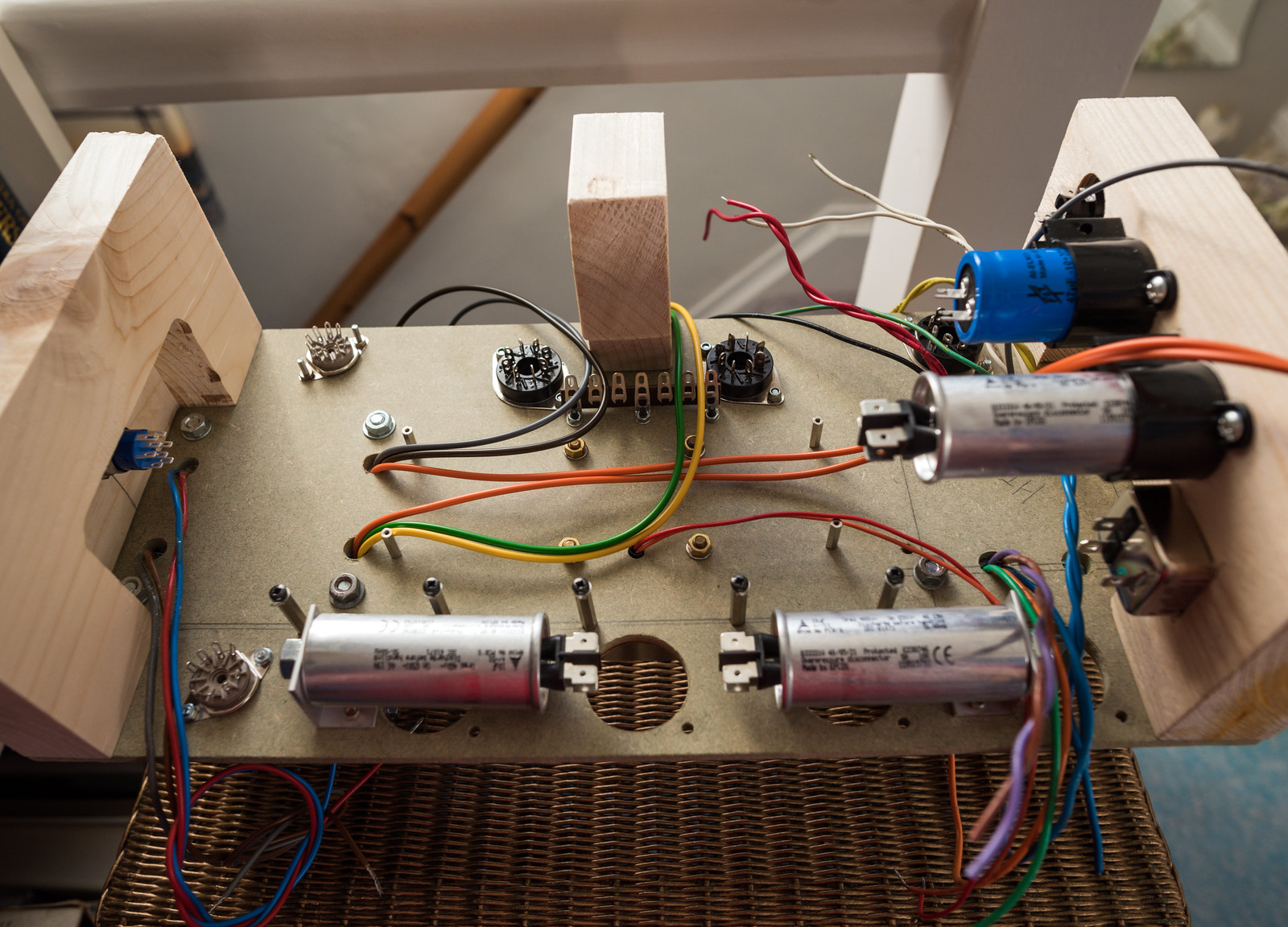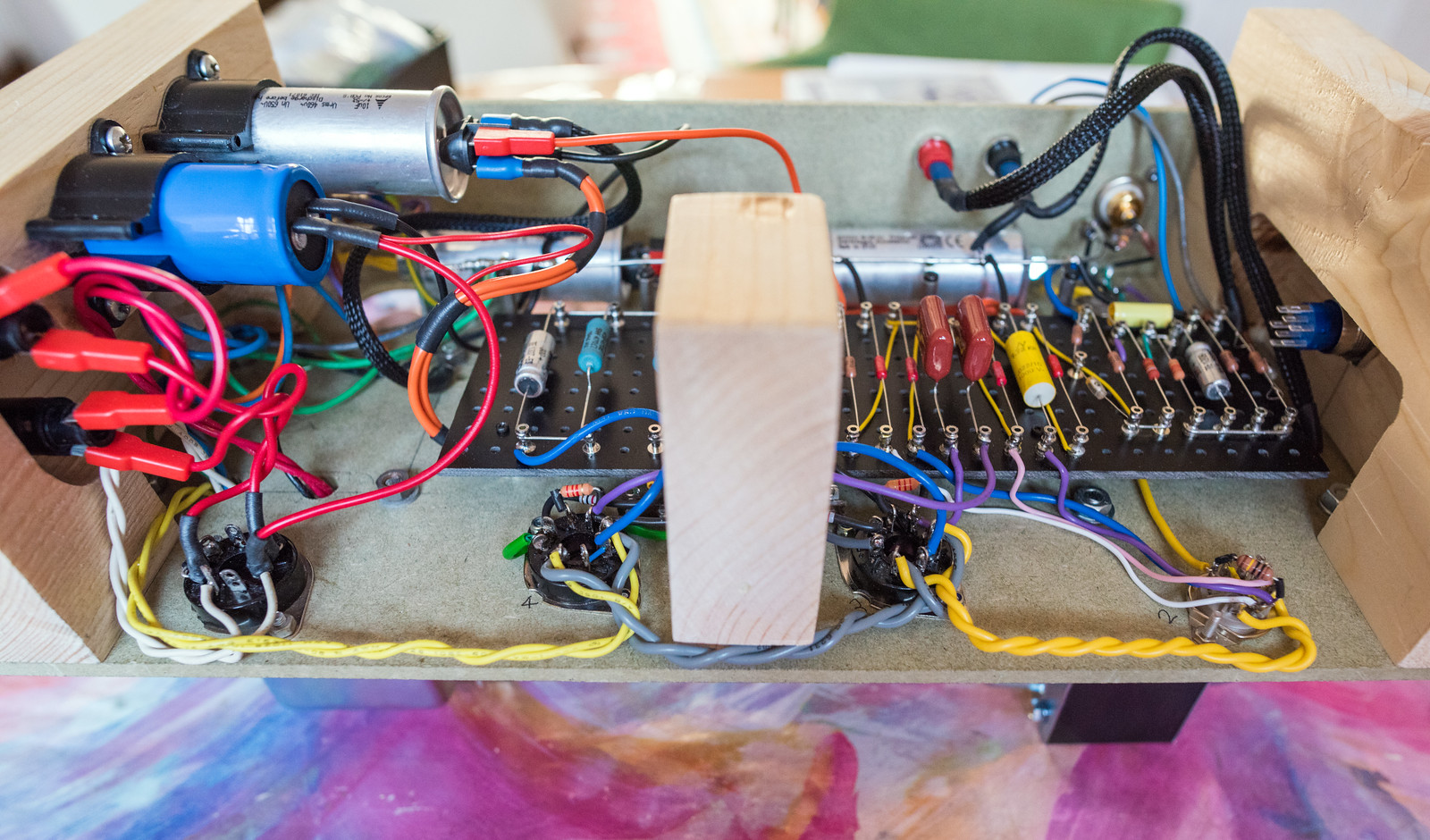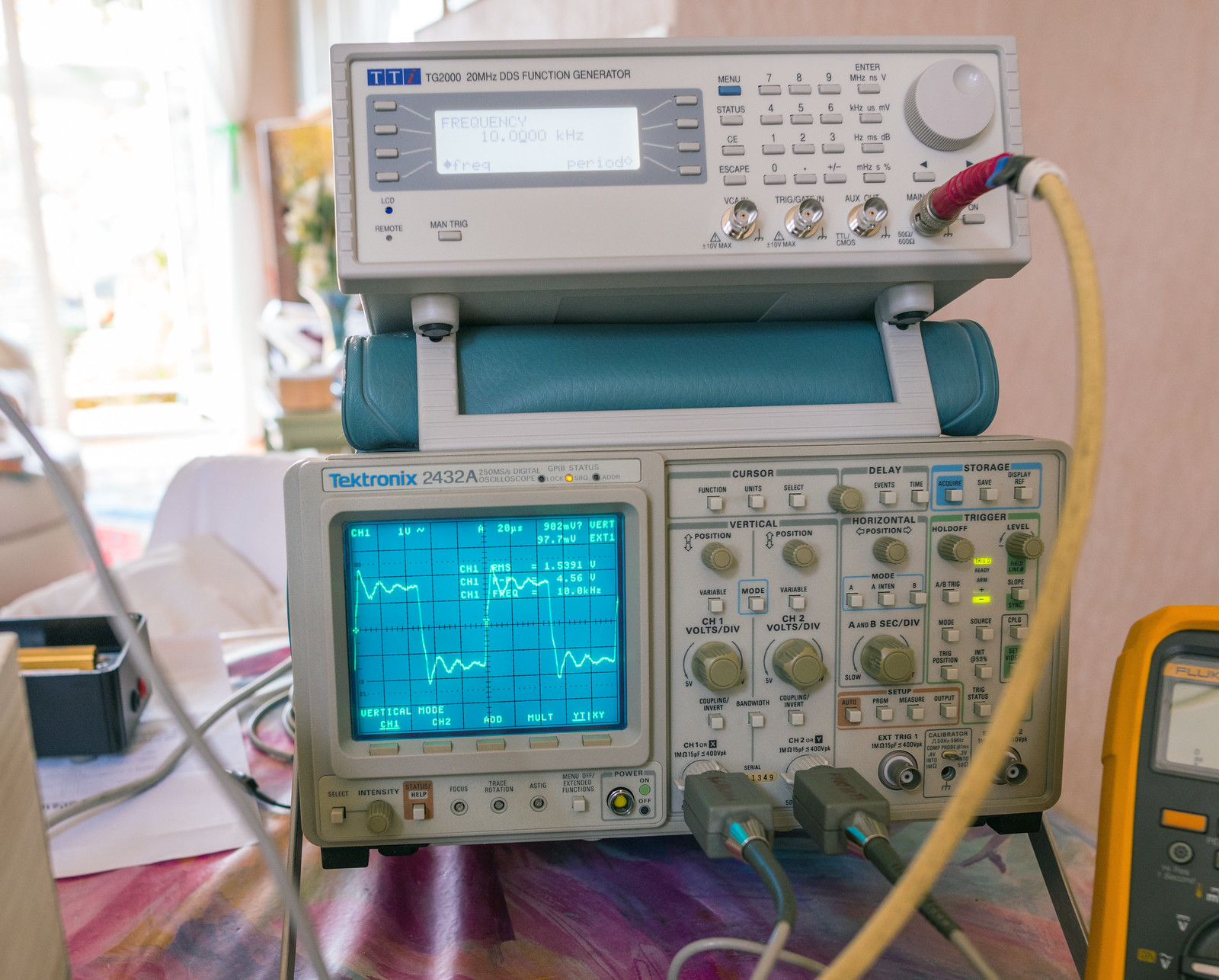I've notched the central support to allow for the wiring to the EL34's and added a tag strip for the anode/UL connections from the output transformer. Will be looming the pairs together when I build it. I've also fitted the ground bus bar supports.

With the turret board in position. I'm not going to bother with the power switch for the time being as the position and the wiring to it is not easy to achieve. It's something I'll be looking into figuring out further down the road. The screwdriver bits mark the position of the ground bus wire.

I'll look at adding some small side panels on which will help to brace the end panels as well as allow mounting of the input socket. The MDF does have a moderate degree of flex when I lift it to move it around, which isn't a surprise considering this thing weighs nearly 12Kg.

With the turret board in position. I'm not going to bother with the power switch for the time being as the position and the wiring to it is not easy to achieve. It's something I'll be looking into figuring out further down the road. The screwdriver bits mark the position of the ground bus wire.

I'll look at adding some small side panels on which will help to brace the end panels as well as allow mounting of the input socket. The MDF does have a moderate degree of flex when I lift it to move it around, which isn't a surprise considering this thing weighs nearly 12Kg.
Last edited:

























